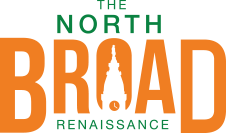By Shalimar Thomas
Between 1970 and 2010, poverty along North Broad Street, from Spring Garden Street to Windrim Avenue, increased as high as 30 percent, a report by City Observatory noted. Today, as this area is poised for revitalization, many wonder how this underserved population will be affected and protected.
I’m often asked how my organization will ensure that the long-term residents and history remain intact during a period of development and economic growth. While there are several strong initiatives that North Broad Renaissance, along with city and community leaders, is working on to protect underserved communities, there is a much stronger, more effective, and highly capable group that can support these efforts.
That group is the people living in these underserved communities.
There are any number of articles that discuss what gentrification brings, including soaring rents, the arrival of wealthier people, and the ever-popular community name change. However, what is often left out of these conversations is the role that current residents have in preventing or lessening these changes – and, more importantly, their ability to ensure that they remain in their neighborhoods and fully benefit from revitalization efforts.
By constantly focusing on external causes and efforts against gentrification, we send a dangerous message that the community itself is powerless. This may partly explain why many of the individuals experiencing change become disengaged and accept things not beneficial to a healthy community – like poor food choices, poor schools, unclean and unsafe streets, dilapidated buildings, and new development that only adds to this unhealthy culture.
Let’s be clear: Disengagement and acceptance lend a mighty hand in support of gentrification efforts.
But let’s also be clear about this: While not all development is good, it’s not all bad. The type of development that’s beneficial will vary and be based on the community. I’m sure (as someone who grew up at Broad and Erie) that there are people who live along North Broad who would welcome investments that promote jobs, small-businesses development, quality education, and good health. I’m sure they would appreciate green spaces and safe environments where their children can play. And yes, I’m sure they would also appreciate diversity. Who wouldn’t?
Perhaps, the way to work toward achieving the positives of development starts with recognizing that underserved does not mean powerless. And there are plenty of examples of this that we can use for motivation.
One case of a community fighting gentrification that I witnessed firsthand was documented by Yes! Magazine. In the 1980s, white flight and disinvestment had devastated the Dudley Street area in Boston, leaving the community with more than 1,300 vacant lots. Today, much of that once-vacant land is occupied by affordable housing and surrounded by parks and gardens, a town common, a community center, a charter school, a community greenhouse, and several urban farms. This transformation was led by the residents.
In Philadelphia, consider the efforts of Christine Brown of Beech Community Services, who successfully advocated that the name “TempleTown” be removed from Google Maps, according to Newsworks. The same community also rallied to protect the legacy and name of the Cecil B. Moore subway station.
Another example comes from an article, “Is Urban Revitalization Without Gentrification Possible?” on the website of the American Society of Landscape Architects ( www.dirt.asla.org). The article highlights a project that helped preserve one of the most diverse neighborhoods in Portland, Ore. The community, with about half its population consisting of people of color, devised a plan to equitably bring commercial activity to its main street while accommodating an influx of new white homeowners and preserving the neighborhood’s diversity. The key to revitalization without gentrification, the article stressed, was “bringing residents and the community to the table often and at the beginning.” And, I would add, we also have to help the residents recognize their power.
Too often, conversations around gentrification position underserved communities as helpless adversaries who find themselves on the short end of revitalization efforts. However, they are not helpless. Their impact in helping to revitalize a community can be massive. It’s time we change the conversation around gentrification and start recognizing that power.
Shalimar Thomas is the executive director of North Broad Renaissance (northbroad.org). sthomas@northbroad.org
Source: http://articles.philly.com/2016-05-26/news/73343503_1_healthy-community-community-center-efforts

